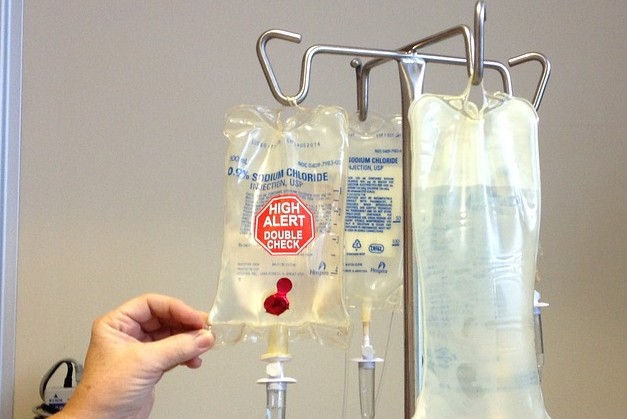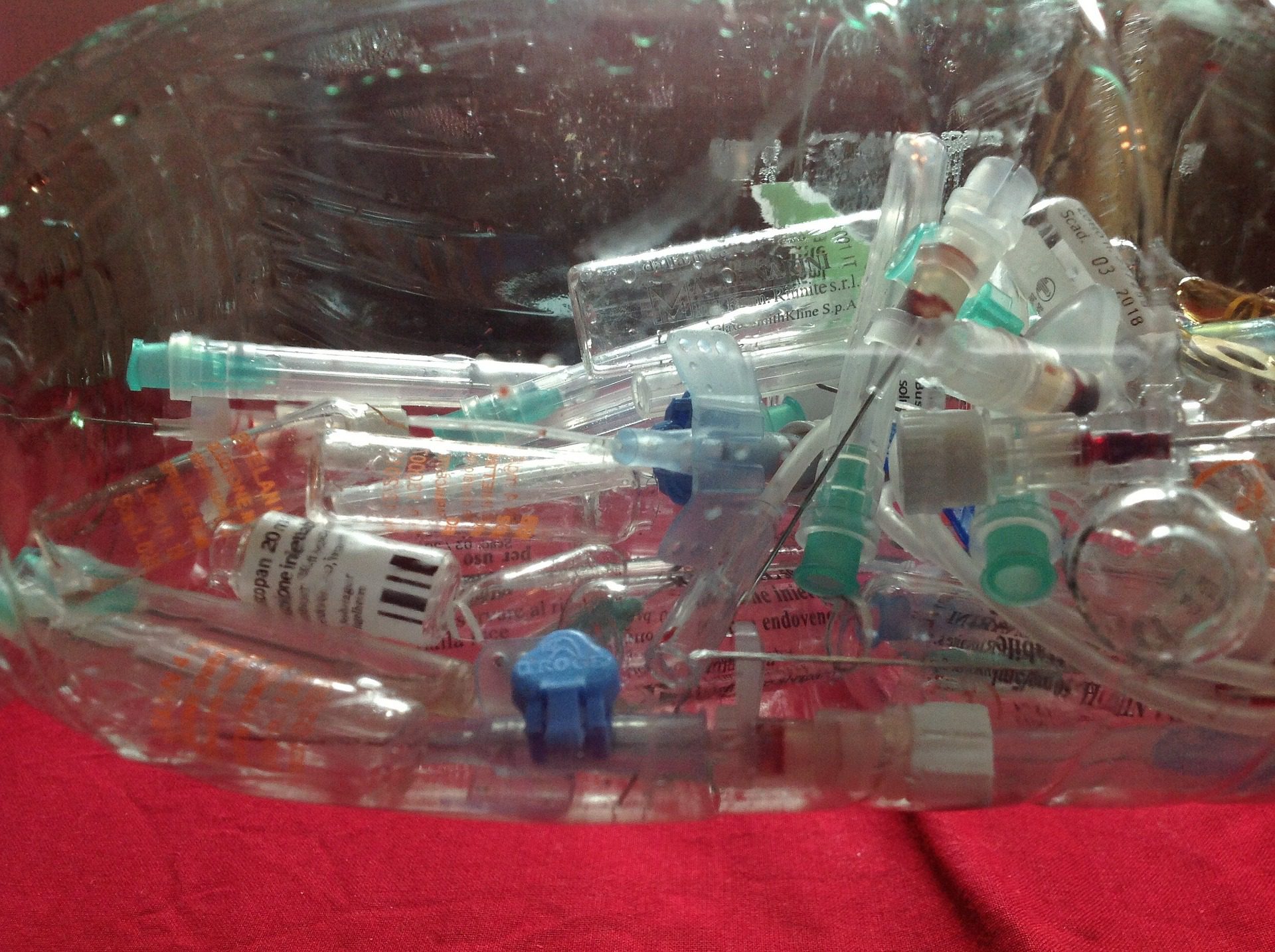Safety First: Your Guide to Accountable Medical Waste Removal Services
Safety First: Your Guide to Accountable Medical Waste Removal Services
Blog Article
Effective and Eco-friendly Medical Waste Disposal Solutions
In the ever-evolving field of health care, the problem of clinical garbage disposal stays a topic of critical significance. As healthcare facilities, facilities, and various other health care facilities strive to provide top quality person treatment, they need to also address the obstacle of efficiently and sensibly dealing with their waste - medical waste removal services. In an era where ecological sustainability is at the forefront of public awareness, discovering solutions that are both environmentally pleasant and effective is not just a matter of compliance but additionally a testament to the dedication of health care establishments in the direction of a greener future. From waste segregation techniques to ingenious reusing efforts, this discussion will discover the different strategies utilized to tackle this pressing issue, leaving you intrigued and eager to explore the prospective remedies that lie ahead.
Waste Partition Practices
Efficient waste segregation techniques are vital to guarantee the safe and appropriate disposal of clinical waste. Medical waste, that includes products contaminated with potentially contagious substances, need to be handled in such a way that reduces the danger of damage to both public wellness and the atmosphere. Appropriate waste partition plays a crucial function in attaining this objective.
Waste partition includes the splitting up of different kinds of waste based upon their features and possible threats. This process makes sure that each sort of waste is treated and taken care of appropriately (medical waste disposal services with WasteX). It begins at the point of generation, where healthcare centers need to have assigned bins and containers for different waste classifications, such as sharps, transmittable waste, pharmaceutical waste, and non-hazardous waste
By segregating medical waste at the resource, medical care carriers can stop cross-contamination and minimize the risk of direct exposure to transmittable agents. This method likewise facilitates the recycling and recovery of certain materials. Segregating and reusing tidy plastics and glass decreases the demand for raw products and minimizes the environmental effect of medical waste disposal.

Autoclaving and Sterilization Methods
In order to ensure the risk-free and appropriate disposal of medical waste following efficient waste partition practices, medical care centers need to employ autoclaving and sterilization methods. Autoclaving is an extensively utilized approach that utilizes high-pressure steam to sanitize clinical waste. This procedure involves positioning the waste in a chamber and subjecting it to a combination of high temperature and pressure, which efficiently eliminates bacteria and provides the waste secure for disposal. Autoclaving is especially reliable in sterilizing things such as medical tools, laboratory tools, and specific sorts of medical waste that can endure heats. medical waste disposal services with WasteX.
Another commonly utilized sanitation technique is chemical sanitation. This entails dealing with the waste with chemicals such as ethylene oxide or hydrogen peroxide, which eliminate microbes by disrupting their cellular framework. Chemical sanitation is usually made use of for heat-sensitive products or materials that can not hold up against the heats of autoclaving. It is vital to keep in mind that chemical sterilization requires correct handling and disposal of the chemicals utilized, as they can be hazardous to human wellness and the environment if not managed properly.
On-Site Waste Treatment Systems
Healthcare facilities have executed on-site waste therapy systems to deal with the disposal of medical waste in a secure and effective manner. These systems supply a economical and convenient solution for managing clinical waste generated within the facility. On-site waste therapy systems utilize various modern technologies to treat and get rid of of medical waste on-site, lessening the need for transport to off-site facilities.
One generally used on-site waste treatment system is the microwave innovation. This technology makes use of microwave power to decontaminate and disinfect medical waste, decreasing its quantity and rendering it secure for disposal. One more system is the chemical disinfection innovation, which involves treating clinical waste with chemicals to eliminate pathogens and reduce its dangerous nature. This method is especially reliable for click here for info fluid medical waste.
On-site waste treatment systems provide numerous benefits. Firstly, they eliminate the risk of clinical waste being mishandled throughout transportation, minimizing the capacity for contamination and exposure to dangerous substances. Furthermore, these systems aid healthcare centers abide by waste administration policies by providing a practical and reliable disposal method. On-site treatment systems reduce the overall environmental impact of medical waste by lessening transport and the requirement for garbage dump space.
Recycling and Repurposing Campaigns
As medical care facilities pursue sustainable waste monitoring methods, they are increasingly exploring recycling and repurposing efforts as a way of decreasing the environmental effect of clinical waste. Reusing and repurposing efforts entail finding cutting-edge ways to recycle or transform clinical waste right into brand-new products or products. This not just assists to lessen the quantity of waste that winds up in land fills or incinerators but also minimizes the intake of basic materials and energy required for manufacturing brand-new items.
One example of reusing in the medical care market is the reprocessing of single-use clinical gadgets. This not just reduces the quantity of waste produced yet also conserves healthcare centers significant expenses connected with acquiring new gadgets.
One more recycling effort includes the recycling of plastic containers, such as medication containers or syringe cases. These containers can be gathered, sorted, and sent to reusing centers where they are refined, melted down, and changed right into brand-new plastic items. This helps to preserve resources and minimize the demand for virgin plastic production.
In addition to recycling, repurposing efforts include finding different usages for medical waste. For instance, shredded paper waste from medical documents or product packaging materials can be repurposed as bed linen material for animals or as insulation material (medical waste removal service). In a similar way, natural waste such as food scraps from health care centers can be composted and used as plant food in yards or agricultural areas.

Renewable Energy Solutions
One reliable method to mitigating the ecological effect of healthcare operations includes executing renewable energy solutions. Healthcare facilities, such as hospitals and centers, take in significant quantities of power for different purposes, consisting of illumination, heating, air conditioning, and operating medical tools. By transitioning to renewable energy sources, these centers can substantially lower their carbon impact and add to a much more sustainable future.

Implementing eco-friendly power services in healthcare facilities not only minimizes greenhouse gas emissions however additionally provides long-lasting price financial savings. While the first financial investment in renewable resource facilities might be higher, the long-term functional prices of renewable resource systems are significantly lower compared to conventional fossil fuel-based power resources. In addition, renewable resource systems are reputable and can supply a nonstop and steady power supply, ensuring continual medical care solutions even during power outages or emergencies.
Conclusion
To conclude, implementing effective and eco friendly medical garbage disposal options is essential for preserving a sustainable healthcare system. By taking on waste partition techniques, autoclaving and sterilization strategies, on-site waste therapy like it systems, recycling and repurposing initiatives, and eco-friendly energy solutions, health care facilities can substantially minimize their ecological influence. These steps not just safeguard the atmosphere yet likewise promote public wellness and safety and security. It is vital for healthcare organizations to prioritize the implementation of these sustainable waste websites disposal practices.
It starts at the point of generation, where medical care centers ought to have designated containers and containers for various waste categories, such as sharps, infectious waste, pharmaceutical waste, and non-hazardous waste.
In order to make sure the proper and safe disposal of medical waste following reliable waste segregation techniques, medical care facilities should use autoclaving and sanitation strategies.Health care facilities have applied on-site waste therapy systems to attend to the disposal of clinical waste in a reliable and secure way. On-site waste therapy systems make use of various technologies to deal with and dispose of medical waste on-site, lessening the demand for transportation to off-site centers.
As medical care centers strive for lasting waste management methods, they are significantly exploring recycling and repurposing initiatives as a means of minimizing the ecological influence of medical waste. - medical waste removal
Report this page